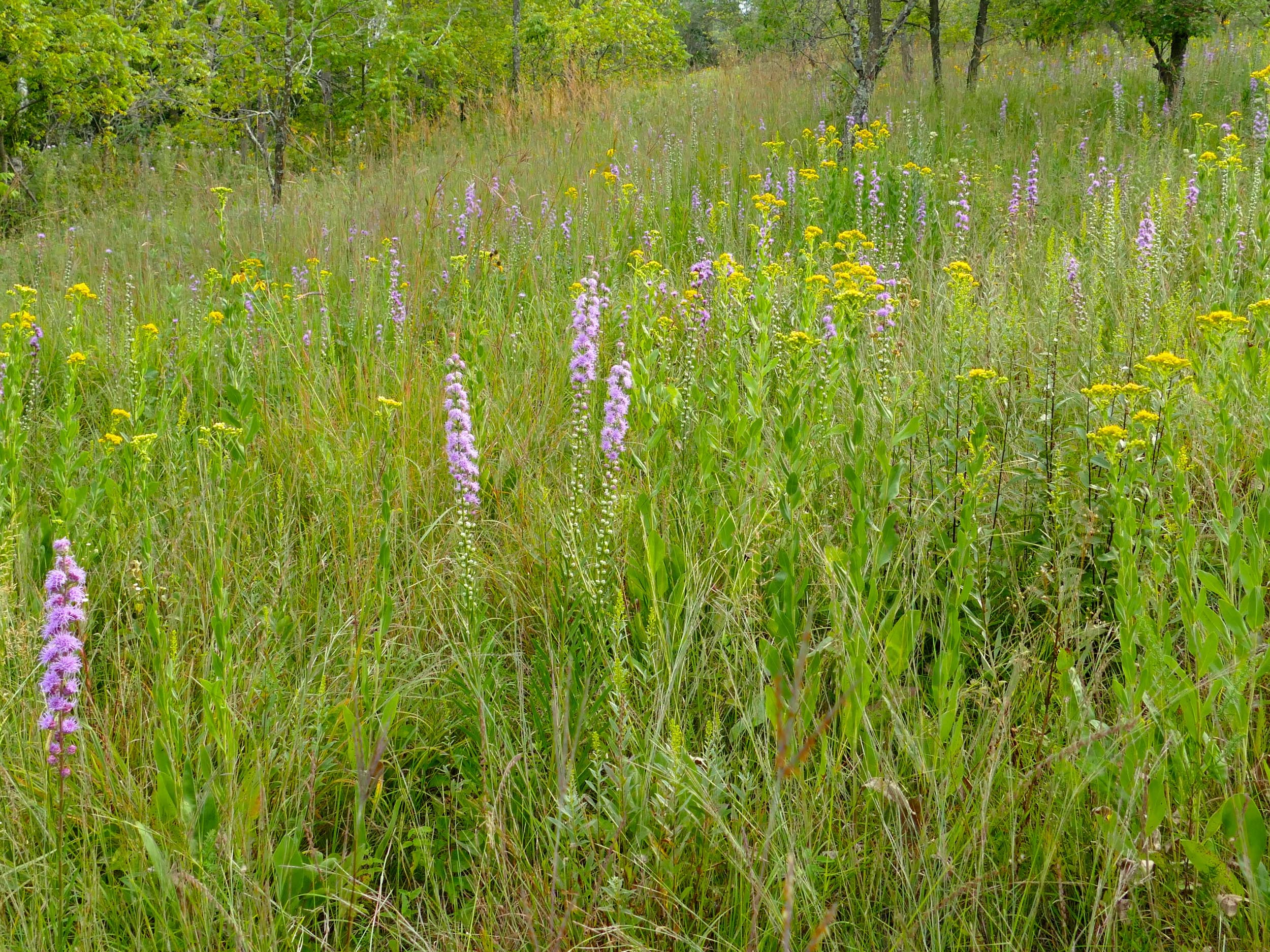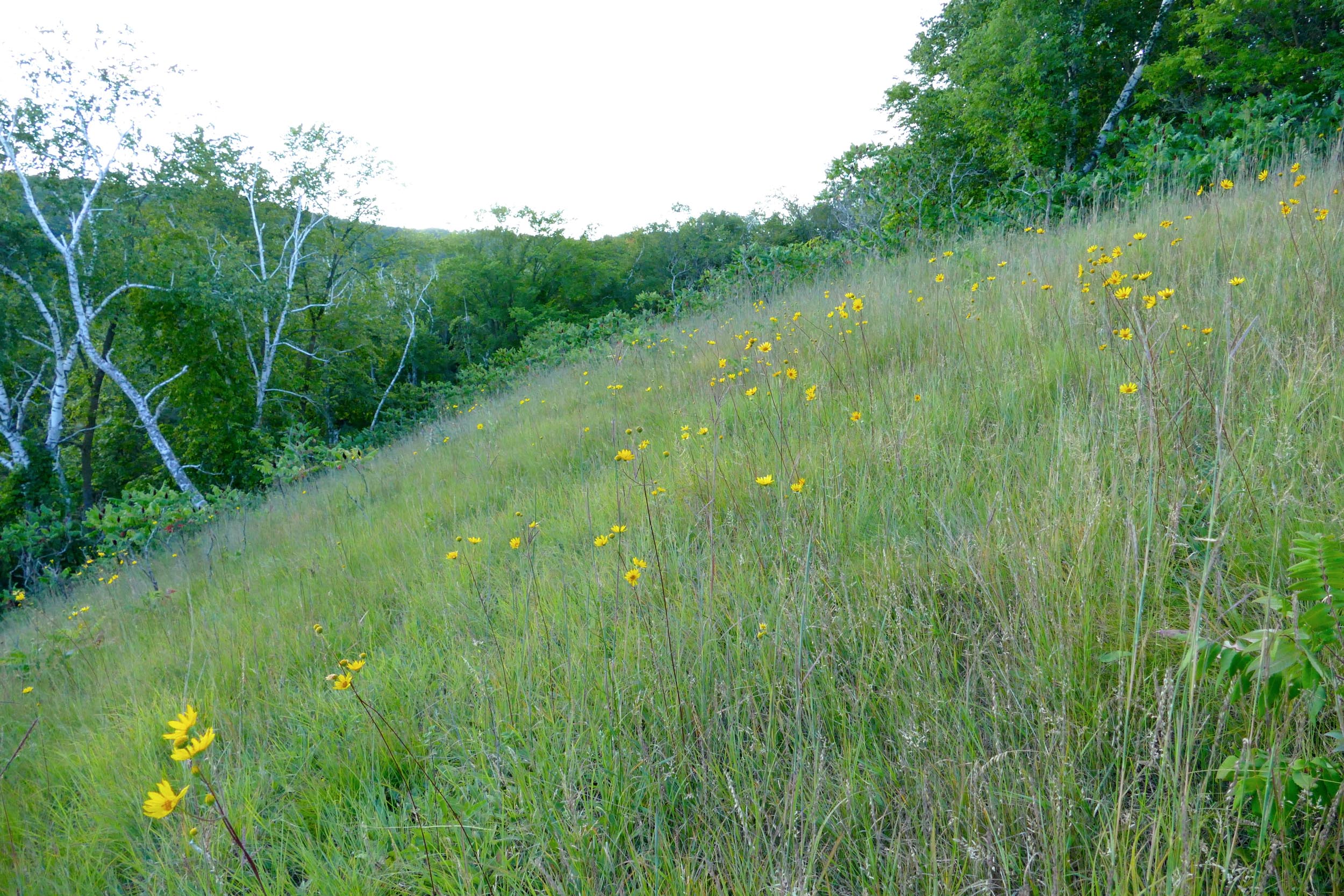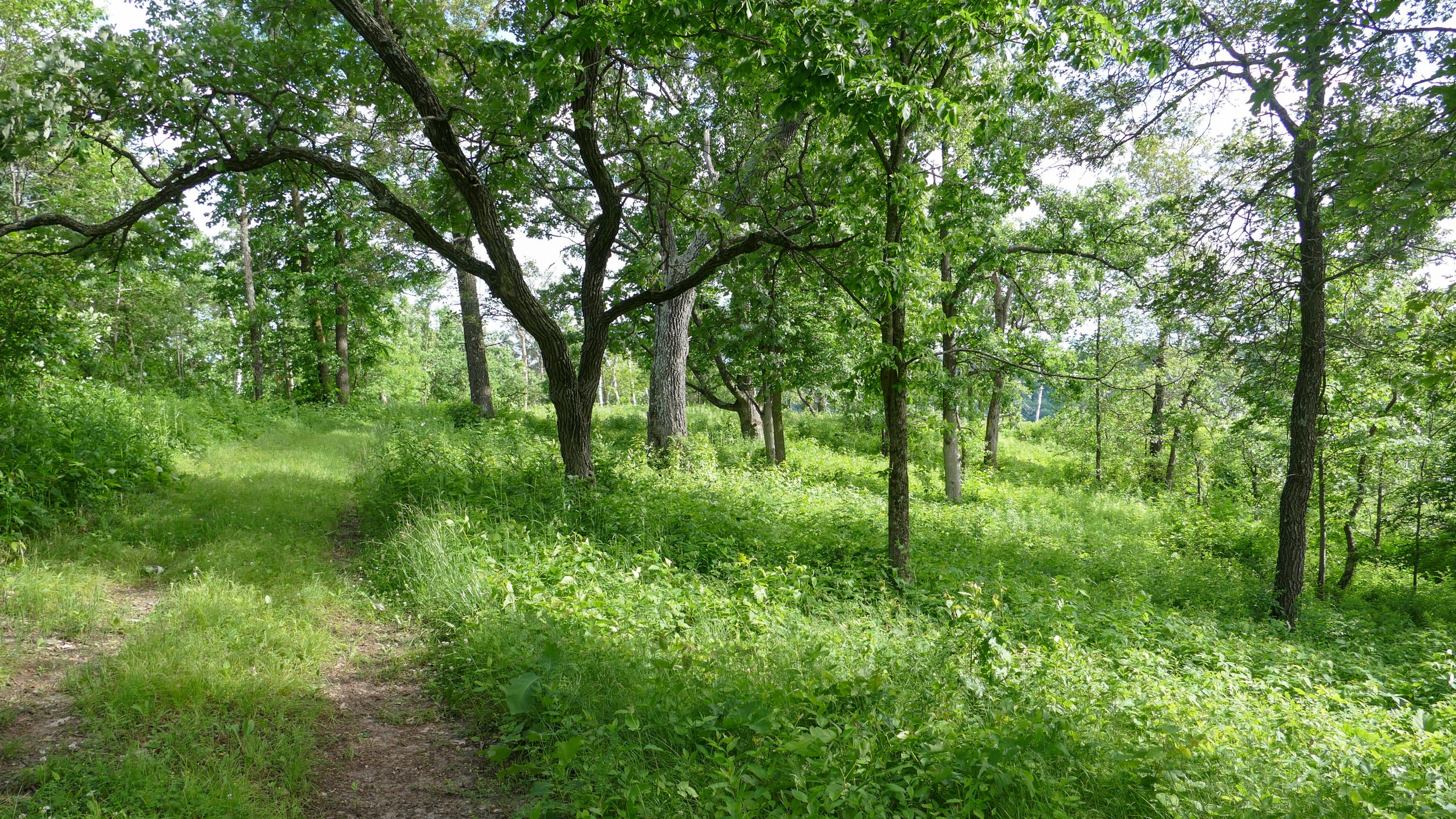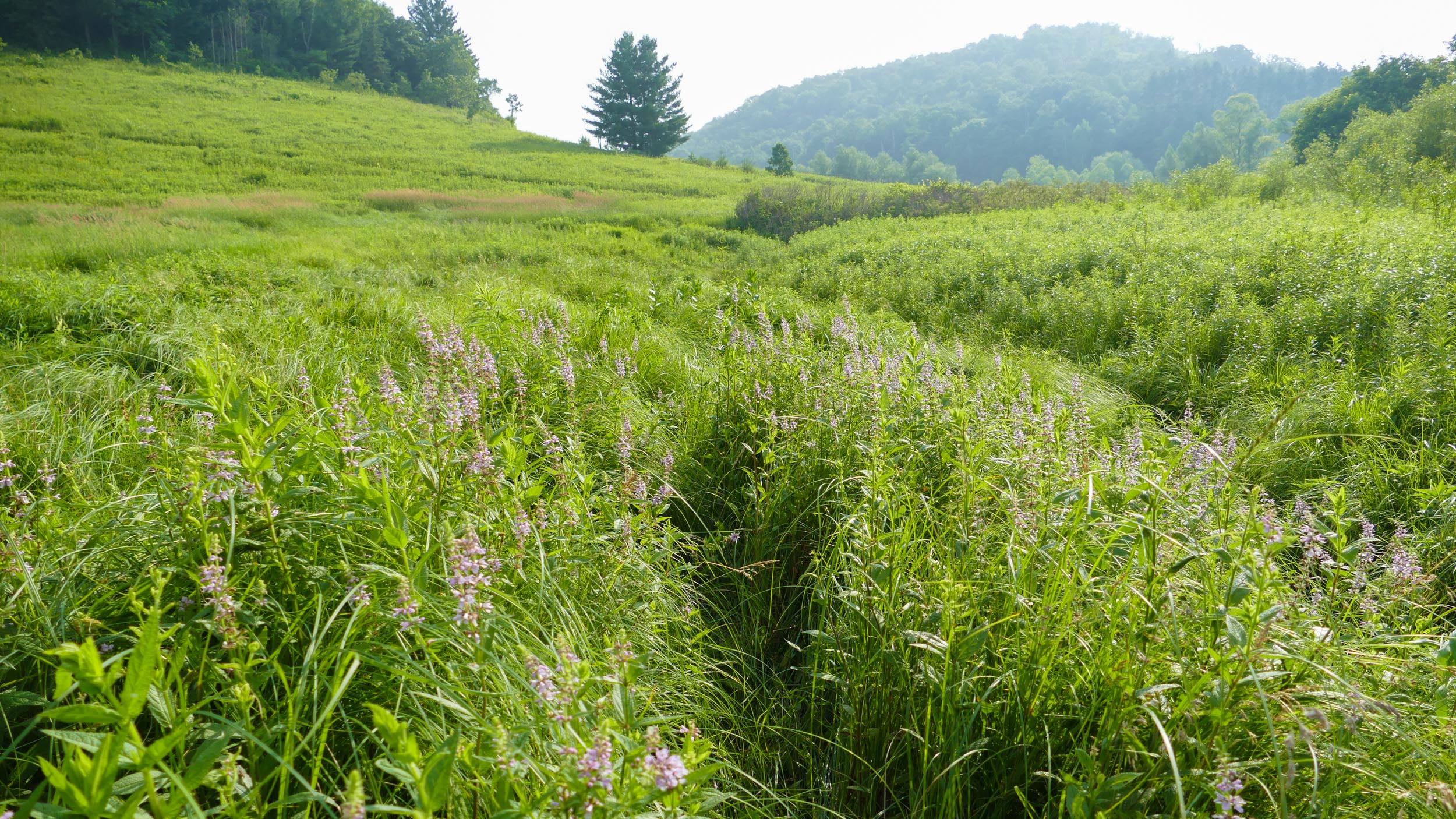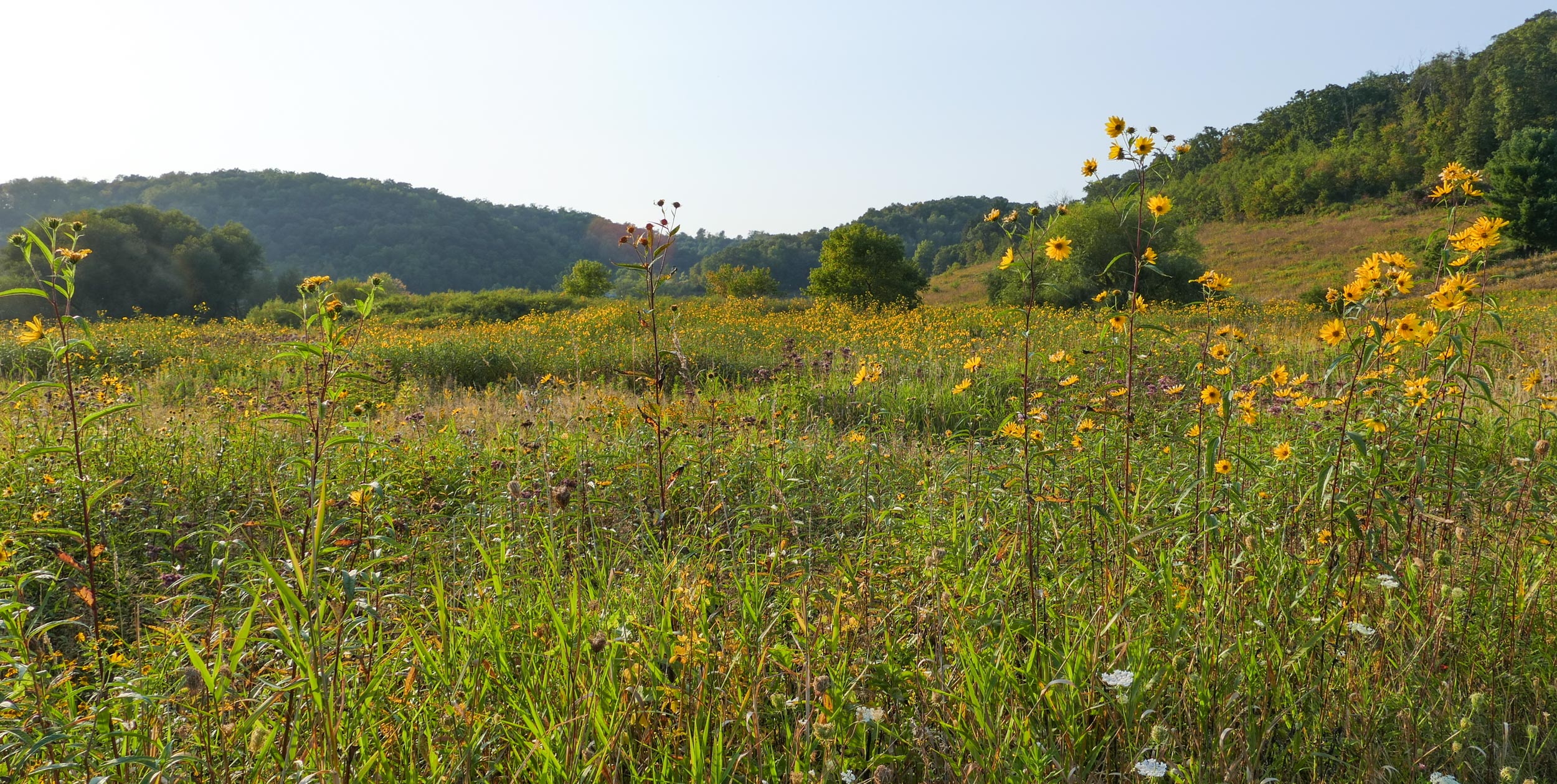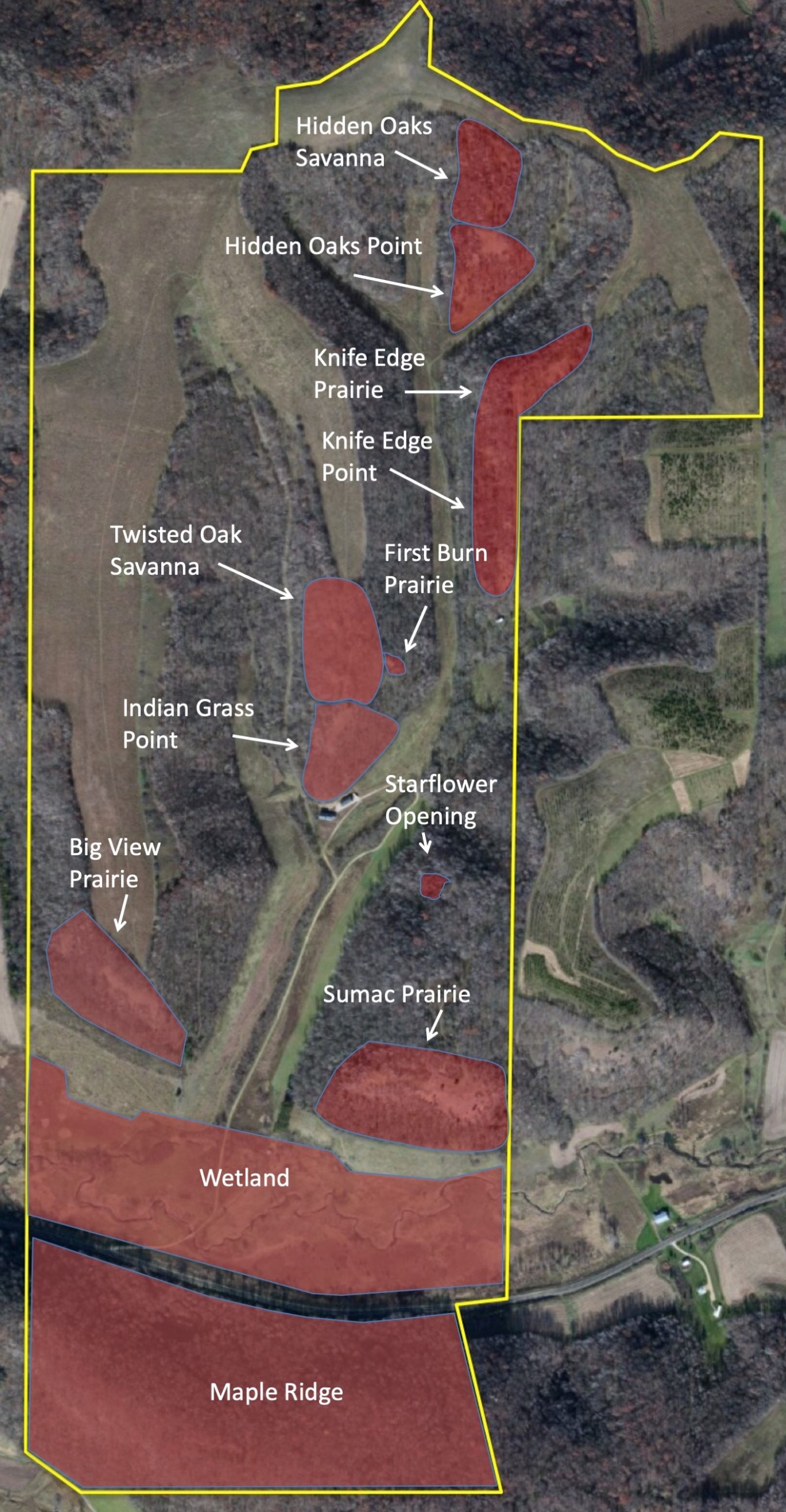When surveyors were marking the townships on this land in 1852 one of them described the land as “mostly covered with scattering black, burr and white oak, aspen timber. Surface nearly covered with prairie grass”
Our land still has remnants of this prairie/savanna landscape. We have overgrown savannas and bluff prairies, wet prairies and sedge meadows, and springs that feed into a narrow creek.
Since the arrival of European settlers, 150 acres was converted to cropland, cows have grazed most of the rest, and it has been protected from fire. As a result, most of the prairie and savanna areas are overgrown with White Birch, Aspen, Sumac, Dogwood and Prickly Ash. But prairie grasses still grow under the tangle of branches, and there are still openings between the trees where prairie plants can flower.
We’ve been trying to restore these remnants – clearing brush, and killing and removing invading trees. We’ve also worked on the wetland areas – killing and removing invasives, and replanting when necessary to bring back native vegetation.
One of our restored prairie remnants with Rough Blazing Star and Stiff Goldenrod.
Bluff prairie – we’ve done restoration work in the middle, but haven’t gotten to the edges.
Remnant savannas are more of a puzzle than other remnants. Because there are so few left, we don’t really know what the original vegetation was like, and I suspect that each remnant had a slightly different mix of plants and animals. Our approach is to cut and remove the small trees and brush, and see which natives come back over time. This is a list of the plants I’ve found growing in the understory of the overgrown savanna areas.
Restored savanna remnant with old open-grown oaks
In the wet areas around the creek we have large remnants of both wet prairie and sedge meadow. The biggest problems there are two aggressive invasives: Wild Parsnip and Reed Canary Grass. We’ve been mowing and pulling Wild Parsnip for years and are starting to see some progress. Reed Canary Grass is still a problem.
A mix of sedge meadow and wet prairie
More wetland – we’ve planted this area with native wet prairie species.
This is a recent aerial photo of the farm with the remnant prairies marked. There are more small prairie openings, and more savanna remnants, but they’re not ones we’re working on yet.
Below are links to descriptions of these remnants with stories about the efforts we’re making to restore them. Most of our land faces south, so most of the remnants are prairie or savanna. Maple Ridge is unusual – most of it is a north-facing slope, so rather than being prairie or savanna, it’s woods – mostly oaks, but it also has Bitternut Hickory and Sugar Maple.
The wetland area is large – about 50 acres – and is a mix of sedge meadow and wet prairie. I’m combining reports of all our restoration efforts in that area into one section called ‘Wetland’, even though that covers a lot of land, and several different habitat types and restoration issues. Little Waumandee Creek is the creek that winds through the wetland.

